L'évaluation Professional Scrum Master de niveau II (PSM II) est accessible à toute personne souhaitant démontrer sa capacité à appliquer le framework Scrum pour résoudre des problèmes avancés et complexes dans le monde réel. Avant de tenter le passage de la PSM II, vous devez avoir des connaissances avancées de Scrum et une expérience approfondie de Scrum. Suivre une formation SCRUM n'est ni nécessaire ni suffisant pour obtenir cette certification. L'évaluation PSM II est difficile et consiste en des questions à choix multiples basées sur votre connaissance de Scrum et la façon dont vous géreriez des situations du monde réel.
Note minimale pour le succès : 85%
Nombre de questions: 30 (15 pour cette simulation)
Get Started for FREE
Sign up with Facebook Sign up with X
I don't have a Facebook or a X account

 Your new post is loading... Your new post is loading...
 Your new post is loading... Your new post is loading...
Current selected tag: 'PSM2'. Clear
Scaled Professional Scrum is based on unit of development called a Nexus. The Nexus consists of up to 10 Scrum teams, the number depending on how well the code and design are structured, the domains understood, and the people organized. The Nexus consists of practices, roles, events, and artifacts that bind and weave the work…
Mickael Ruau's insight:
So you can have hundreds and hundreds of Scrum teams working on the same product area. However, when you have functionality that requires more than nine or so teams you have two choices:
Jeff Sutherland articles: Scrum and CMMI – Going from Good to Great by Jakobsen and Sutherland. Systematic. Mature Agile with a twist of CMMI by Carsten Ruseng Jakobsen, Kent Aaron Johnson. Systematic. Take No Prisoners by Sutherland and Altman Shock Therapy by Sutherland, Downey and Granvik Scrum in Church by Rev. Arlene Conan Sutherland, Jeff …
This part I of a three-part series will focus on goals. We’ll examine how the goals set out in the EBM guide correspond to the Scrum Guide and some tools and formats for setting workable goals. Part II will focus on experimentation, and Part III will focus on measurement. This part I of a three-part series will focus on goals. We’ll examine how the goals set out in the EBM guide correspond to the Scrum Guide
Now that you're done learning Scrum and/or Kanban, it's time to review a few tips that will be useful in your PSM I, PSPO I, or PSK exam.
Mickael Ruau's insight:
Be Careful with CompatibilityThere are many resources for Scrum and Kanban, but not all of them are compatible with these exams — even some of them that come from reputable authors. So, be careful with that. How Many Choices?The PSM, PSPO, and PSK exams are not normal multiple‑choice exams. You may have questions that ask you to select more than one choice (e.g., Which two of the following are…). You wouldn’t believe how many people miss that and just pick one choice! So, read the question carefully to understand when more than one choice is required. Sometimes, the question specifies the number of choices, and sometimes it just tells you to pick multiple choices. The choices in these questions have check-boxes (small squares) instead of radio buttons (small circles); so, make sure you get used to noticing that as well. NOT!“Which of the following is NOT a responsibility of…” “All of the following are responsibilities of… EXCEPT for…” Sadly, many people miss these capitalized negative words and pick the wrong answer. This is more common when the question is more complicated and you become so engaged in assessing the correctness of the statements that you forget the question was asking for the wrong statement instead of the right one. Be very careful with this type of question, and pay serious heed to it if you make this mistake in your simulated exams. Damned Details!You know that the Daily Scrum meetings are for the Development Team members, and only they are required to attend the meeting. Others can still go there and observe them — even people from other projects (to learn something new from them) — but they only observe, and they shouldn’t talk. Take these statements:
Are these statements true or false? The first one is simple: It’s true. The second one, however, is false because “participate” implies engagement, whereas everyone except the Development Team members is only supposed to be observing. There are many questions like this, where a single word changes everything. You need to be careful with it. Modal VerbsLet’s continue the example from the previous tip. What do you think about the following statements?
While the first statement is true, the second one is false, and it’s all because of the modal verbs. It’s correct that the Product Owner is allowed to attend the meeting, but it doesn’t mean that it’s necessary for them to be there. In case you’re wondering, in the exam, “can” means “may”, and “should” means “ought to”/“required to”, similarly to the way English is used by most people nowadays. Look It Up!The PSM, PSPO, and PSK exams are in open-book format, so, you should make sure you take advantage of that. Have a copy of the Scrum Guide (and also the Kanban for Scrum Teams Guide for the PSK exam) open and ready for reference. As well as this, while you’re practicing with the sample questions, write down all the points that are troubling you, organize them, and have them ready to use during your exam. It’s better to write your notes in a file rather than on paper, so that you can search them easily. Note that the amount of time you have for each question is less than what you have in most other exams, and you can only look up the concepts when you’ve had enough practice, you manage your time perfectly, and you’re completely familiar with the resources you’re using. So, again, remember to practice this in your simulated exams. The Scrum GuideThings would have been much easier if the Scrum Guide could be used to answer every question, but that’s not the case. Most questions in the exam cannot be answered based solely on the Scrum Guide, so, don’t expect otherwise. Besides the above, some questions in the exam are based on certain interpretations of the Scrum Guide (the way Scrum.org sees it). For example, how many Product Owners do we have in scaled Scrum? One of the co-authors of the Scrum Guide believes that there must be one and only one Product Owner, no matter how many teams you have, while the other co-author believes that it’s a good idea to have multiple Product Owners, and a Chief Product Owner. Which one do you think is supported in the Scrum Guide? Both! Finally, some points in the Scrum Guide are not clear enough; for example, the number of Definitions of Done for multiple teams, and what most people understand based on the guide, which is different from what they are expected to answer in the exam.
Got blockers? Don’t leave them til the Standup and don’t remove them yourself. Help the team to self-organise!
Are we successful as a Team? Can we measure that? We look at 10+ areas of team success and how to measure them.Get inspired to choose the metric you need…...
Scrum Values can be demonstrated and used anywhere within Scrum Framework: By all 3 accountabilities, during each event, and also during each Artifact creation/maintenance. This is the first article…
(Based on a post on Melissa's namesake blog, link here. Melissa offers training on this topic and others at melissa@produxlabs.com.) Learning is a key component of product development—one which is frequently minimized or skipped entirely Background 4 steps of Mike Rother's Toyota Kata 5 steps of Mike Rother's Coaching KATA What is the target condition? What are…
In every organization and in every team, I run into one or two customs that people tell me are part of “Scrum by the book”, that aren’t actually in the book. The book I’m referring to in this case is…
Every once in a while I come across the interesting notion that Scrum is “Agile training wheels”. Scrum would be the ideal framework to start Agile. I do understand where this is coming from, but I… |
Reflections and findings triggered by the experience interview with Jimmy Janlén.
Mickael Ruau's insight:
Spoiler-alert: the magic silver-bullet answer didn’t emerge. We did have a very interesting conversation. In short: it’s very difficult to measure because even if a team or organization is successful, are they successful because of your contribution, or despite it?
Scrum of Scrums describes one of the first approaches to scale Scrum and is often confused with Nexus Daily Scrum.
Mickael Ruau's insight:
The differences between Nexus Daily Scrum and Scrum of Scrum
The Nexus Daily Scrum differs from Scrum of Scrum by:
In summary, the Nexus Daily Scrum is not a Scrum of Scrums. The Nexus Daily Scrum, just like the Daily Scrum, is a planning meeting and not a problem-solving or reporting meeting as in the case of Scrum of Scrums.
How effectively a Nexus works depends on its ability to eliminate dependencies. Eliminating dependencies simplifies integration. Scrum Masters who efficiently perform cross-team refinements save time. Saving time saves money.
Mickael Ruau's insight:
Feature Bazar: Scrum teams pitch which Product Backlog items they want to work on
At a Feature Bazar, the Product Owner presents the new features. Afterward, the teams select the topics they want to work on. Each feature should be chosen by at least two teams. By assigning teams to the features, the initial overview for the Cross-Team Refinement is quickly created.
Update the Cross-Team Refinement Board daily
Just as the Nexus Sprint Backlog is updated daily in the Nexus Daily Scrum when new dependencies occur in the current Sprint, the Cross-Team Refinement Board should also be updated daily. Only when the Cross-Team Refinement Board represents a real-time picture of all known dependencies, is it easy for the teams to resolve them. The Nexus updates the Cross-Team Refinement Board daily. Image by Richard Hundhausen. Representatives of the teams participate in the Cross-Team Refinement
Inviting all members of the Scrum teams to the Cross-Team Refinement is often neither practical nor necessary. In order to proceed in a focused manner, only representatives of the individual teams should be invited. Scrum teams select their representatives based on the work to be refined. Domain and technical knowledge are good selection criteria to quickly identify appropriate team members.
Alternate team and cross-team refinement
In cross-team refinement, cross-team dependencies are uncovered, eliminated, and forecasts are made about which team is likely to work on which Product Backlog item. In contrast, in team refinement, Product Backlog items are broken down, detailed, and estimated. Often, new cross-team dependencies are found in the team refinement. To eliminate these dependencies as quickly as possible, it makes sense to constantly alternate team and cross-team refinement.
Cross-team refinement should be a regular meeting
To reduce unnecessary scheduling, cross-team refinement should always take place on the same date. For me, it has proven successful to reserve at least one afternoon a week for the Cross-Team Refinement.
Not just visualize dependencies, but eliminate them
Visualizing dependencies in the Nexus Sprint Backlog to make them transparent is only the first step. The critical step is to consistently eliminate dependencies between teams. Ways to eliminate dependencies are: Interchange features between teams, break down Product Backlog items, build up missing knowledge in the team and change the likely possible processing order. Nexus Integration Team provides awareness of cross-team dependencies
In their daily teamwork, Nexus Integration Team members constantly keep an eye out for potential dependencies. If new dependencies are discovered, they encourage team members to make them transparent at the Cross-Team Refinement Board and look for ways to eliminate them early. In the long run, this creates awareness of the impact of cross-team dependencies within the teams.
Don't fall into the waterfall trap: Don't plan too far in advance, focus on the next sprint
Software development is complex. There are unknown unknowns. Therefore, it is impossible to anticipate all dependencies in advance, no matter how long refinement and planning are done. To avoid wasting time, the nexus should only refine the next one to three sprints in advance.
Trying to anticipate the implementation sequence of the Product Backlog is like a faucet: the further we turn it on, the closer we are to the waterfall.
The Scrum Guide has been updated to make it less prescriptive, using simpler language to address a wider audience. These changes have been done to make Scrum a “lightweight framework that helps people, teams and organizations generate value through adaptive solutions for complex problems”. An interview with Ken Schwaber and Jeff Sutherland about the changes to the guide.
Mickael Ruau's insight:
Key Takeaways
The Scrum Guide has been updated to make it less prescriptive, using simpler language to address a wider audience. These changes have been done to make Scrum a "lightweight framework that helps people, teams and organizations generate value through adaptive solutions for complex problems". The changes between 2017 and 2020 Scrum Guides are:
Learn how to measure technical debt and how to make the most out of your tech debt budget so you can boost productivity.
Scrum Commitments: Tying Loose Ends and Shoehorning the Definition of Done — Age-of-Product.com analyzing the Scrum Guide 2020.
Now that I’ve got your attention, I apologize for the spicy title. To be fair, you’ve been writing a lot of juicy articles on how we as Product Owners can do better. Recent ones that come to mind are…
Learn how to build a profitable product with our 6-week, part-time Prod MBA programme:
Chapter 15. The Product Kata As discussed earlier, and as seen in Figure 15-1, The Product Kata is the process by which we uncover the right solutions to build. … - Selection from Escaping the Build Trap [Book]
A while ago, I was introducing the Kanban Kata by Hakan Forss to a team that was struggling to meet their deadline. They had failed twice before and their jobs were in jeopardy. Implementing Continuous Improvement and Kata helped the teams crea |






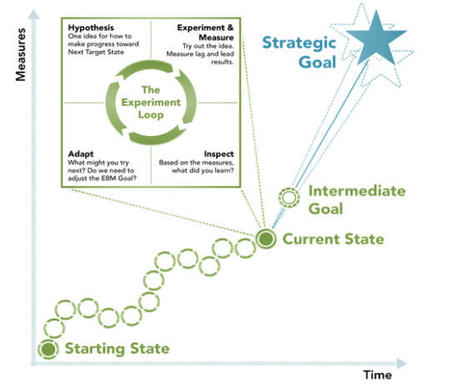


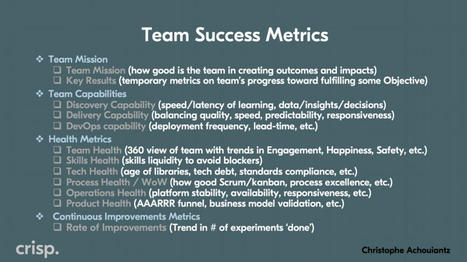

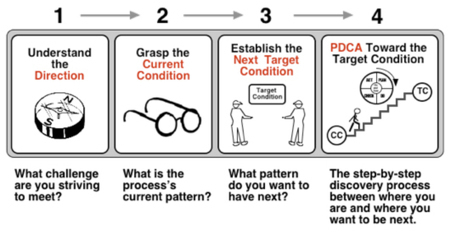

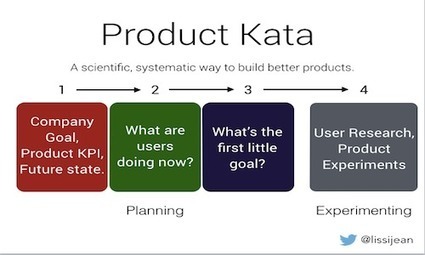

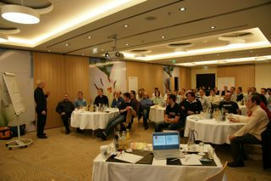

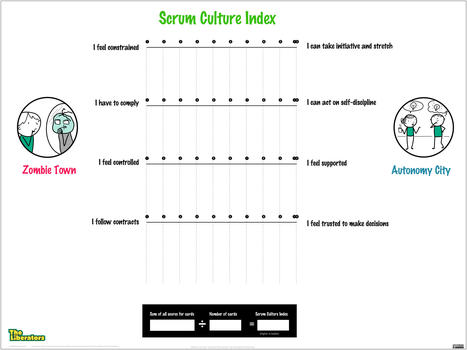
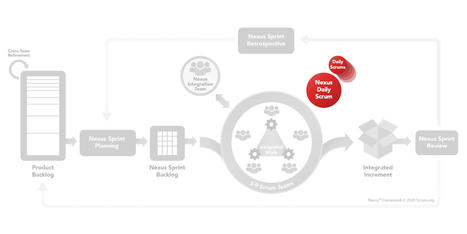
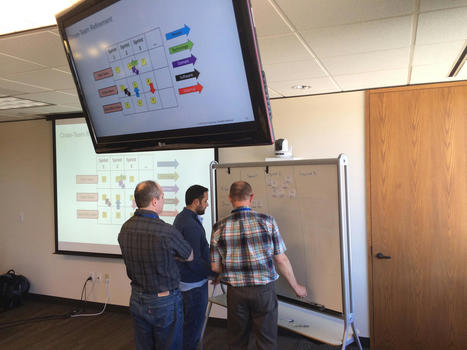

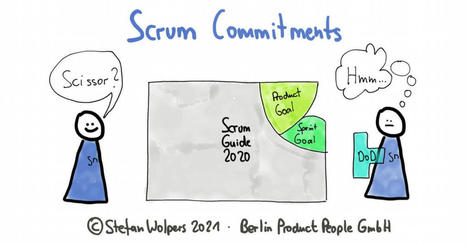

![15. The Product Kata - Escaping the Build Trap [Book] | Devops for Growth | Scoop.it](https://img.scoop.it/QZ2eW9FT5C8703q_jH0lFzl72eJkfbmt4t8yenImKBVvK0kTmF0xjctABnaLJIm9)






Un exerciseur pour préparer la certifiication Scrum PSM2